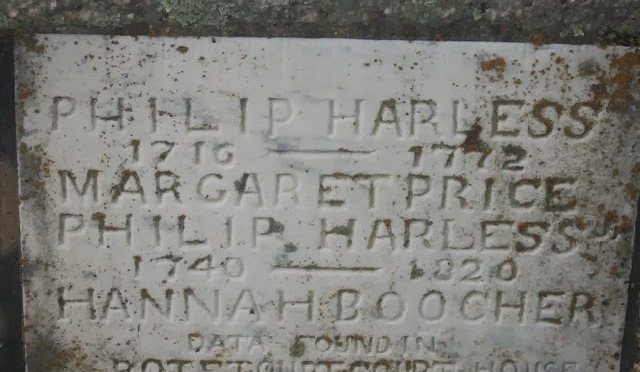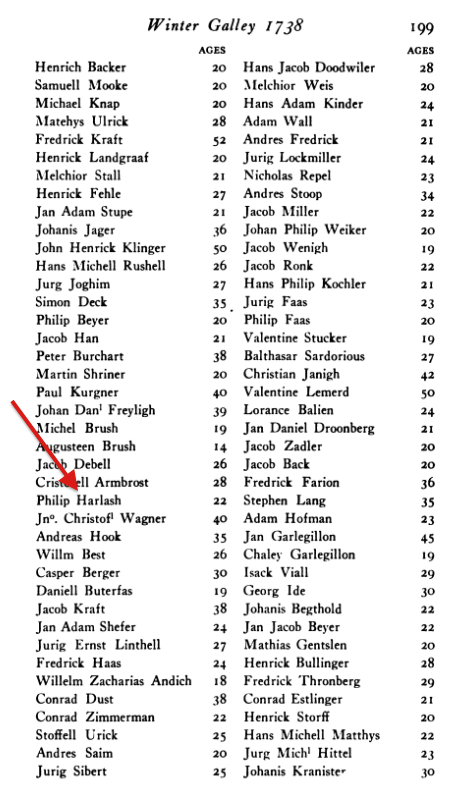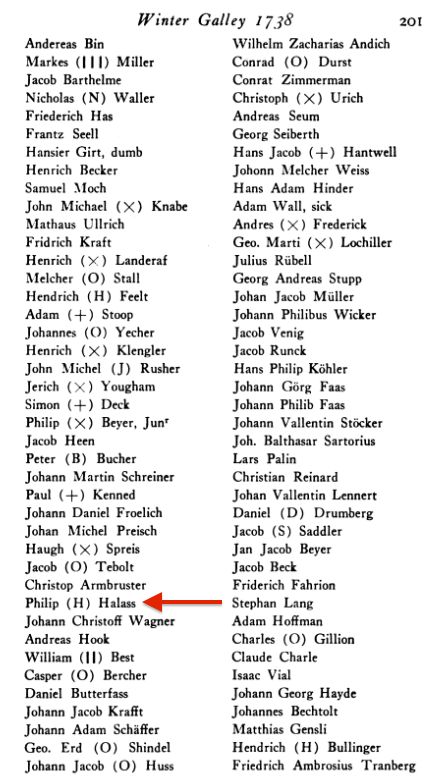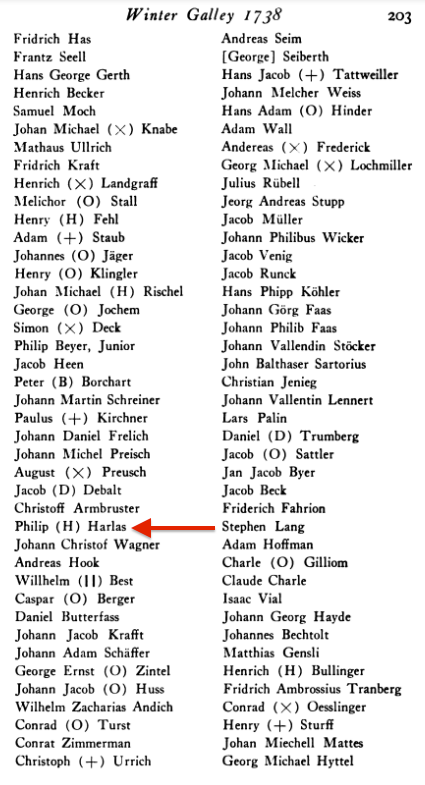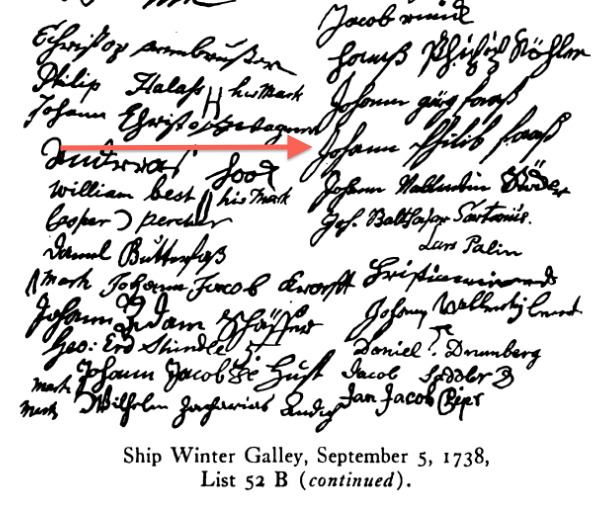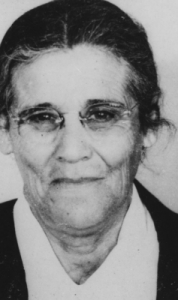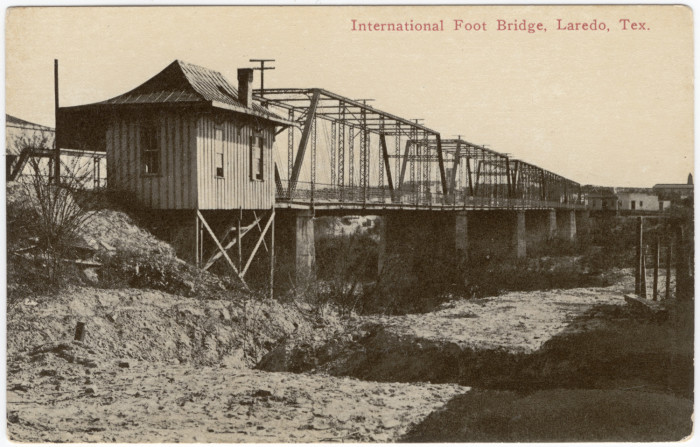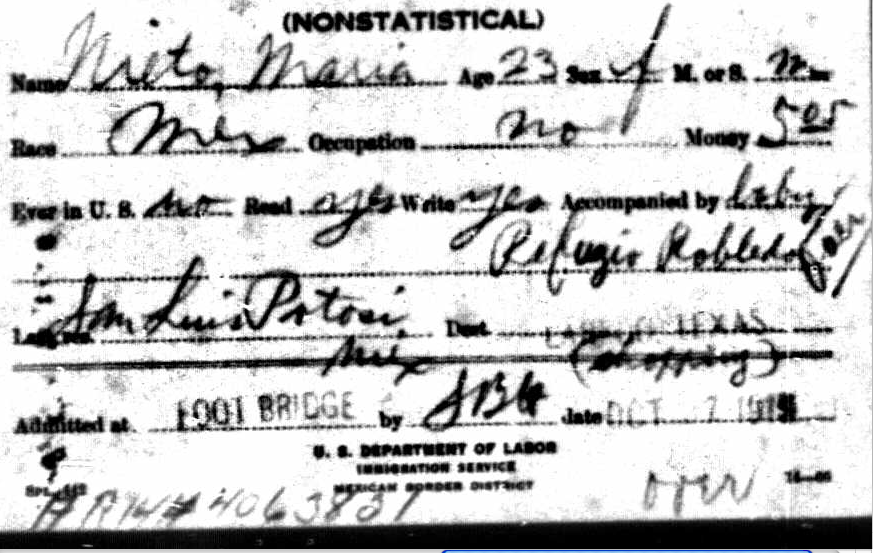My 26th entry in Amy Johnson Crow’s “52 Ancestors in 52 Weeks” family history blogging challenge.
The challenge: have one blog post each week devoted to a specific ancestor. It could be a story, a biography, a photograph, an outline of a research problem — anything that focuses on one ancestor.
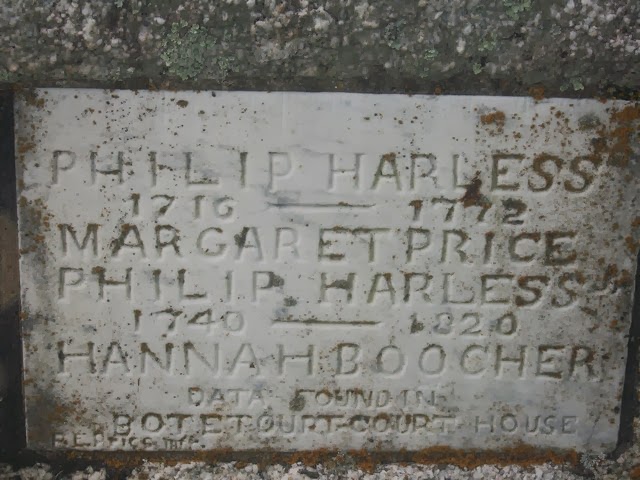 |
| Headstone erected posthumously for John Philip Harless and wife Margaret Price. |
My 26th ancestor is my husband’s 7th great grandfather John Philip Harless (1716-1772). John Philip is our first Harless ancestor to immigrate to America, specifically, to the American colonies. John Philip Harless is of course the American spelling and pronunciation of his name. Some documents spell his first name “Johan” and his last name “Harlas”, “Harlash”, “Harlos”, “Harlosh”, “Horlas”, and “Horlash”. Sometimes he is referred to as “Philip”, instead of John Philip or Johan Philip.
Harless is the husband of Anna Margaretha “Margaret” PREISS [Price], the grandfather of Ferdinand HARLESS (1755-1853), the 2nd great grandfather of Miles (Myles) Washington HARLESS (1826-1891), the 3rd great grandfather of Leonard Jackson HARLESS (1858-1946), and the 5th great grandfather of Jean Alice HARLESS (1912-2011).
John Philip was born in 1716 in Germersheim, a town in the present day southern German state of Rhindeland-Palatinate. He married Anna Margaretha “Margaret” Preiss (1718-1784) — whom I profiled earlier in my first #52Ancestors post — on 17 February 1738 in Offenbach, Germany.
The new couple celebrated their honeymoon on board the ship the Winter Galley, in the last wave of the Palatine migration. It appears that they boarded the Winter Galley in Rotterdam, the Netherlands, with a stop in Deal, England, which is near Dover.
View John Philip Harless : Old World in a larger map
Harless, his wife, and a handful of other family members (no children yet), arrived at the Port of Philadelphia on 5 September 1738, and Harless took the required oath of allegiance (to the British king!) that same day.
Ralph Beaver Strassburger and William John Hinke compiled, transcribed, and published (in 1934) the available Palatine immigration ships’ lists for Philadelphia arrivals from 1727-1808. Our John Philip Harless is included, in three different types of lists produced from the Winter Galley. Volume 1 of the Strassburger and Hinke publication includes type transcribed lists. But Volume 2 includes copies of the actual signatures!
I will blog more about the family and their descendants. But, if you are impatient, the U.S. era of their family history has been extensively covered in the Pritchard publication noted below, which is available to read for free on HathiTrust.
Sources Used
Pritchard, J. L. R. (1962). Harless genealogy, John Philip and Anna Margaretha (Preiss) Harless;pioneers in western Virginia and some of their descendents, ([2d ed.].). Cupertino? Calif.]. Retrieved from http://hdl.handle.net/2027/wu.89066181694
Strassburger, R. B., & Hinke, W. J. (1934). Pennsylvania German pioneers;a publication of the original lists of arrivals in the port of Philadelphia from 1727 to 1808, (Vols. 1-3, Vol. 1). Norristown,. Retrieved from http://hdl.handle.net/2027/mdp.49015000086612
